Where are Blue Jays going in fateful year 2023 … as expectations continue to rise, what was good enough then isn’t good enough now ????
Mar 30th, 2023 | By Rob Sparrow | Category: Sporting LifeSPECIAL FROM ROB SPARROW, HIGH PARK, TORONTO. MARCH 30, 2023. 4:15 PM EDT. [NOTE FROM CW EDS : The Sparrow’s much awaited review of “Canada’s MLB Team” at the start of the fateful year of 2023 has arrived just in time for the Jays’ season opener in St. Louis today. And it is divided into a half-dozen dazzling hits : (A) 2022 Roundup … Promising season ends with a post-season thump ; (B) New Rules for the Grand Old Game… ; (C) Retrofitted Rogers Centre… ; (D) Shifting Culture in the Dugout and on the Field… ; (E) So who are these new Jays… ; and finally (F) Outlook for 2023… In what does seem a year of some changes — in both the Toronto Blue Jays and a new-rules MLB!]
(A) 2022 Roundup … Promising season ends with a post-season thump …
After missing out at a chance of the postseason by a single game in 2021, the Blue Jays Vladimir Guerrero Jr. raised expectations in spring training by saying, “Last year was the trailer. What you are going to see this year is the movie.” And while their regular season record was one game better at 92-70, good enough for the first Wildcard and a ticket to the playoffs, it still had to go down as a disappointing campaign for the Blue Jays, as they bowed out quickly and in embarrassing fashion to the Seattle Mariners.
Along the way, Manager Charlie Montoyo was fired mid-season, at once an admission that the team had underperformed and an acknowledgement that the easy-going bongoist was no longer the best choice to manage the team. Replacement manager John Schneider then led the team to a 46-28 finish, yet there was a lingering sense throughout the year that it didn’t quite involve the fireworks that Vladdy predicted.
The inconsistent play was manifest in Game 2 of the Wildcard playoff, armed with a seven-run lead amid a boisterous sellout crowd, victory seemed to be in the bag when Toronto led Seattle 8-1 after five innings. Yet, it fell apart in remarkable fashion as the Mariners staged the largest road comeback in post-season history for a 10-9 victory and two game playoff sweep. There has never been a loss like this for the Blue Jays, a defeat this painful, this sudden, this significant. This looked like a laugher — like fun — and then it wasn’t funny at all.
In many ways it was this single defeat that was a microcosm of the Blue Jay entire season. For as talented as the team was, it still had flaws that had been noticeable throughout…the lack of attention to detail, focus and effort on the basepaths, poor outfield defence, a starting lineup that consisted entirely of streaky right-handed bats, and a shortage of shut down relievers who miss bats in key leverage situations. It was the taste of this defeat which in turn would shape all the offseason management decisions. They simply could not run the whole thing back with this both talented and fun group, hence setting off a series of moves that changed the overall culture of the team. Yet before we dive into how that will play out for the Blue Jays in 2023, there is a whole new set of rules this season that will change how the game will be played…
(B) New Rules for the Grand Old Game …
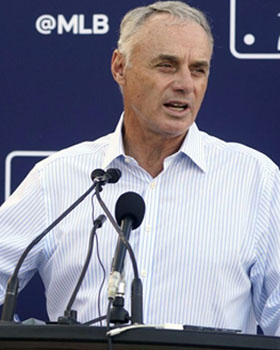
Since commissioner Rob Manfred took over in 2015, Major League Baseball (MLB) has faced several key challenges — from navigating a COVID-shortened season and a contentious labor battle to controversies about sticky substances on the mound and the baseballs used across the sport. Now with the season opening, MLB is about to embark on perhaps its greatest challenge this century: implementing dramatic on-field rule changes designed to make baseball more entertaining and played at a faster pace. So, what rules are changing and what will it mean?
(1) Pitch Clock
The New Rule – Pitchers will have 15 seconds to throw a pitch with the bases empty and 20 seconds with a runner on base. Hitters will need to be in the batter’s box and alert to the pitcher with eight seconds on the pitch clock.
How it will be enforced — If a pitcher has not started “the motion to deliver a pitch” before the expiration of the clock, he will be charged with a ball. If a batter delays entering the box, he will be charged with a strike. Each stadium will have two clocks located behind home plate on either side of the umpire while two more will be required in the outfield on either side of the batter’s eye. Each umpire will be equipped with technology which will inform them when the pitch clock has expired.
What they are trying to Change — Since 1980, MLB games have increased in average length from 2 hours and 33 minutes to over 3 hours and 11 minutes in 2022 (the longest on record), while the length of actual on-field action has actually decreased with more strikeouts and bases on balls. They are looking to eliminate all the dead time between pitches and speed up the action on the field.
Preliminary Findings: In last years’ trial period in the minor leagues with stricter pitch clock enforcement — based on a 14-second clock with the bases empty and an 18-second clock with runners on — the results were immediate; the average game time was 2 hours, 39 minutes, that’s 24 minutes shorter than the average of the 2021 season (3 hours, 3 minutes). The clock, one Minor League manager said, is “absolutely incredible. It’s given more time to the game versus just the fluff in between pitches. … What it does, it takes all the fluff out.” When implemented at the beginning of this years’ MLB Spring Training the results were also startling; the average time dropped to 2 hours, 36 minutes, from 3 hours, 1 minute last year. MLB Commissioner Manfred feels that in the long run, this will be a more watchable and enjoyable sport because of those 25 minutes of dead time the clock cuts out of the game.
(2) The Shift
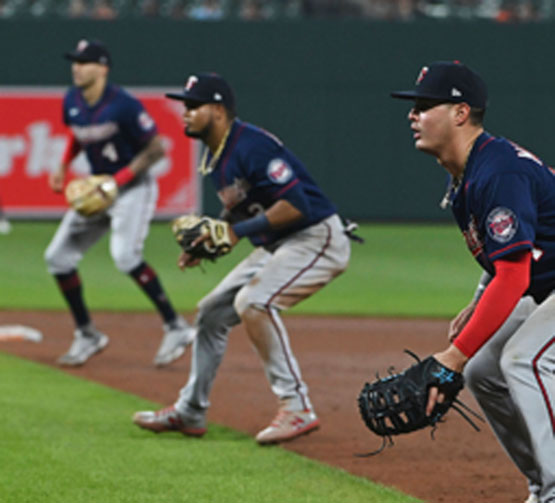
The New Rule – At the time a pitch is thrown, all four infielders are required to be on the infield dirt (or infield grass) with two on each side of second base. Players will be able to move as soon as the ball leaves the pitcher’s hand. Infielders who began the inning on one side of the field will not be allowed to switch to the other side for the entirety of that inning — unless there’s a mid-inning substitution. In other words, a player who starts an inning at first or second base has to remain on that side of the field for the whole inning but can switch to shortstop or third base the next inning. If there’s an injury mid-inning, then the infield can be reset.
How it will be enforced — If the hitting team reaches base and runners advance on a ball hit under the violation, the game proceeds without penalties. If the play has any other consequence (an out, a sacrifice, etc.) the hitting team can decide either to accept the penalty ( which would add one ball to the hitter’s count) or decline it, and the play would stand.
What they are trying to Change — The league-wide batting average was down to .243 last season, the lowest since 1968. A lack of singles in particular is at the heart of the decline, with 2022 rate of 5.35 per team the fourth-lowest in MLB history, and the 2021, 2020 and 2019 seasons filling the three spots ahead of this year on the all-time list.
Preliminary Findings: During the 2022 minor league season, in the lower levels of the minors where shifts are regulated, the batting average on balls in play by left-handed hitters rose by eight points. Runs and batting average were both up through the first wave of MLB Spring Training games compared to a year ago, with runs per game rising to 10.9 from 10.6 and batting average to .263 from .259. Yet unlike the measurable quantifiable change in the pitch clock this rule change is more qualitative in its aesthetics, as what fans want, MLB Rule Consultant Theo Epstein has said, is having games decided “by diving plays, not by whose front office devised the best algorithm to position all their shifting infielders.” In essence they want to return the emphasis back to the athleticism of the fielders.
(3) Limit on Pickoffs/Disengagements
The New Rule — Pickoffs are one version of a “disengagement,” which consists of any time the pitcher makes a pickoff attempt, fakes a pickoff, or simply steps off the pitching rubber for any reason, as well as when the defense requests time. Pitchers are allowed two disengagements per plate appearance without penalty. The disengagements rule resets if a runner or runners advance a base within the same plate appearance.
How it will be enforced — After a third step-off, the pitcher will be charged with a balk, unless at least one offensive player advances a base or an out is made an ensuing play after the step off.
What they are trying to Change — A lack of action on the basepaths has been a concern of MLB’s in recent attempts to improve the aesthetics of the sport, with stolen bases per team down to 0.51 per game in 2022 down from 0.66 a decade ago. For contrast, in the 1980s and 1990s stolen base rates were 50% higher hovering around the 0.75 range.
Preliminary Findings: In 2022, when the pickoff rules went into effect in the minor leagues, the stolen base attempts rate skyrocketed, increasing to 2.85 attempts per game from 1.83 – no team in MLB last year even averaged one. Additionally, with a balk being called after the two “disengagements”, minor leagues saw a 22.6% increase in balks being called to 0.201 per game, up from 0.164 per game in 2021. The rule aims to speed up both the enjoyment of the game (no fan likes pickoffs) and the pace of play, giving runners more of an advantage stealing bases.
(4) Bigger Bases
The New Rule — Bases will be increased from 15 inches to 18 inches (about the size of a large pizza box) which will shrink the distance between bases by 4 1/2 inches.
What they are trying to Change — The increase in the size of the bases should reduce injuries around them while increasing stolen base attempts.
Preliminary Findings: In the minor leagues, bigger bases combined with the previous rule about pickoffs saw not only a large increase in steals per nine innings to 2.85 attempts per game, but saw the stolen-base success rates skyrocket to 77 percent from just below 70%. MLB teams tend to run when they calculate at least a 75 percent probability of making it. So if 77% is the new probability, look out. If major-league players start trying to swipe bases at the same clip we saw in the minor leagues in 2022, it would give us a stolen-base attempt rate we haven’t seen in the major leagues in over 100 years. In a short sample size in MLB this Spring Training stolen bases attempts have gone up to 1.8 per game from 1.1 last season, yet we should see that increase when the games begin to count later this week.
Once the regular-season gets underway, the new rules should prove to be well-liked by fans. They also figure to be just as popular with the new-look Blue Jays because they spent the off-season getting faster and more athletic, while also loading up on left-handed bats to take advantage of the shift restrictions. Those attributes seem like a perfect fit for the new MLB and the new park renovations at the place they used to call the Skydome.
(C) Retrofitted Rogers Centre …
Not only will the Toronto Blue Jays feature several new faces on their roster next season, but the Rogers Centre is also receiving a much-needed facelift. As part of the stadium’s offseason renovations, phase one of the $300-million project includes a significant overhaul in the outfield, with both home and away bullpens raised and multiple new fan engagement sections introduced. And with that, fans will no longer will witness a cookie-cutter symmetrical outfield layout in Toronto.
Previously, the Rogers Centre’s outfield dimensions were straightforward: 328 feet down both foul poles, 375 in the alleys and 400 in centre field. But starting this season, those dimensions will be drawn in, aside from the corners. In left-centre field, the wall distance has been reduced from 375 feet to 368, with a slight increase in wall height, from 10 feet to 11 feet. But in right-centre field, the distance drops dramatically from 375 to 359, and the wall is now 14 feet as opposed to the previous 10 feet. We could also be seeing some centrefielder thievery when it comes to catching home runs, as the centre-field wall has been dropped from 10 feet to 8 feet.
The Rogers Centre was already considered a hitter-friendly ballpark prior to these alterations, yet the updated outfield will favour hitters even more. Scoring is still likely to increase with the reduced dimensions, and with the asymmetrical layout, defenders will have to maneuver different indents and cutouts, particularly in right field which could create some crazy bounces with doubles turning into triples and inside the park home runs.
These new dimensions are also probably another layer of explanation to the club’s emphasis on outfield defence in its off-season work, replacing weak fielders Teoscar Hernández and Lourdes Gurriel Jr. with plus defenders Daulton Varsho and Kevin Kiermaier. The Kiermaier-Varsho duo, along with fellow newcomer Brandon Belt, will likely be three notable beneficiaries of the Rogers Centre’s right-field renovations, especially from an offensive standpoint. Together, all three lefties should witness increased production involving batted balls hit to the pull side and the 359 feet right power alley.
As for left field, the Blue Jays were already an offence that excelled at blasting home runs in that direction. With the fences moving in it should become easier to do so, and right handed power hitters such as Vladdy Guerrero, Bo Bichette, Alejandro Kirk, George Springer, Matt Chapman and Danny Jansen should continue to enjoy the home cooking.
The Rogers Centre still remains an active construction site, with final renovations ongoing to the 100- and 200-level outfields, and the finishing touches being done to five “outfield neighbourhoods” and new social spaces that include; patios, drink rails, rooftop bars, and viewing platforms designed to enhance overall fan experience. This means the Blue Jays will start the season with 10 straight road games with the home season opener scheduled for April 11th against the Detroit Tigers.
(D) Shifting Culture in the Dugout and on the Field …
One place inside the Rogers Centre that promises to be less festive will be in the Blue Jay dugout as the “Barrio” Home Run jacket will not be part of the party when the season begins. The jacket was originally brought to the team midway through the 2021 season by interpreter Hector Lebron, where flags of countries of origin for all players, coaches and staff were represented with “La Gente Del Barrio” emblazoned on the back, which translates to “the people of the neighbourhood.” Whenever a Jays player homered, he would put on the jacket shortly after crossing home plate, then he would then do a catwalk-like strut through the dugout with others showering him with sunflower seeds before posing for a ballpark camera. That routine is now a thing of the past.
The pivot in culture was telegraphed when Toronto sent Teoscar Hernandez and Lordes Gurriel Jr. packing over the winter, both perceived as too prankish at the Latino end of the bench. Hernandez threw the sunflower seeds, and Gurriel Jr. seemed to be in the middle of everything crazy, fun and silly in the Blue Jays dugout. Both now are gone and that’s not accidental.
When the Blue Jays front office emerged from end-of-season meetings, two things became evident: one, they wanted a better defensive team, and two, they wanted a team with a day-to-day approach a little more professional/serious than what has been seen in recent years. “It’s time to go from a talented, fun team to a talented, fun team that’s going to scrap and claw and find ways to win games,” said manager John Schneider. “It’s a fine line between silly and fun. There’s something to be said about acting like you’ve been there.”
Schneider wasn’t talking about the home run jacket specifically, but about a tone he’s been diligent in hammering home since the team removed the interim managers tag from his title. It’s also a concept that appears to have attracted buy-in from both the new players and last years’ holdovers. The playoff loss last October stung and there seems to be a universal recognition that a sharper focus and attention to detail will avoid a similar fate in 2023.
Yet as one casual resident baseball observer noted, “It’s disappointing to me. They were fun to watch. I liked them dancing around the dugout — the water fights they would have, with Vladdy messing up the Gurriel’s hair — that was the best part of the game”. With Guerrero Jr. still very much on the team he has stated that the “Barrio’s still here. Barrio will stay here. Because the founder of the Barrio (him) is still on the team.” So don’t be surprised then if the mothballed home-run jacket makes an appearance later this season — perhaps this time celebrating Blue Jay post-season success.
(E) So who are these new Jays…
Following a disappointing two-game sweep at the hands of the Seattle Mariners in the playoffs last October, the Toronto Blue Jays spent their offseason forging a new identity as the pieces and personalities quilted together. On the offensive front, the front office rejigging their roster to place a greater emphasis on defence and lineup balance. Daulton Varsho and Kevin Kiermaier — two Gold Glove-calibre defenders who both hit left-handed are now part of the new look outfield, and two-time World Series champion Brandon Belt was brought in to provide some thump from the left side along with plenty of playoff experience.
DAULTON VARSHO : The cost to acquire Daulton Varsho was extremely high, but it was a price the Jays were prepared to pay to transform their lineup. Varsho possesses a ton of power, with 27 home runs in 151 games in his first full season with the Arizona Diamondbacks. He also drew a decent number of walks (46) while striking out at an above-average rate (145) and producing a slash line of .235/.302/.443. Varsho won’t be asked to do too much in this offence, likely slotting somewhere between fifth and seventh in the batting order to start the season. Yet high-strikeout, low-walk profile might be frustrating to watch at times, toss in an unremarkable average liner (90.5 mph) and grounder (79.7 mph) exit speeds, both over a full standard deviation below league average, so with just one full year sample size there is a bit of risk here. Yet a move to the AL East and the rejigged Rogers Centre could easily see him surpass 30 homers in 2023, while also providing value with his speed on the bases.
Varsho, a converted catcher, is also considered a plus defender who has experience at all three outfield positions. He was a finalist for a Gold Glove in 2022 and ranked in the 99th percentile for outs above average and the 97th percentile for outfielder jump. “The impact that he’s going to have on our team is going to be on every side of the ball — the baserunning impact, the speed, the versatility, elite defence, and the fact that he can also catch for us is about as good of a fit as possibly we could have found,” Blue Jays GM Ross Atkins said. “It is the ideal fit for this roster and one that we are very excited about.”
KEVIN KIERMAIER : The Blue Jays signed left-handed hitting centre-fielder Kevin Kiermaier, a three-time Gold Glove winner who will boost their outfield defence. Over nine full seasons in the majors with the Tampa Bay Rays, Kiermaier batted .248/.308/.407 with 112 stolen bases. More pertinently to the Blue Jays, he has been a 71 Outs Above Average defender since 2016. Kiermaier is arguably one of the best to patrol centre, both his jumps on balls in play and arm strength have been among the best in the league the past decade.
As mentioned, outfield defence will loom much larger than usual for the Blue Jays 2023 season, with MLB implementing new rules to ban infield shifts, and new outfield dimensions coming at Rogers Centre as part of the current renovation. Kiermaier also leads with non-stop energy, much to the shock of his Blue Jays teammates, who were surprised he’s not jaded after years of grinding in the big leagues. “I had one of the young guys ask me, ‘Do you still get adrenaline playing?’ I said, heck, dude, every day. Every day, man,” Kiermaier said. “This is what I love to do. I love to play. [If] you win and have fun, it’s the best.”
BRANDON BELT : The Blue Jays signed left-handed hitting first baseman Brandon Belt to a one-year deal with his middle-of-the-lineup profile. The former San Francisco Giant has played all 12 years of his big league career in the Bay Area, which include an all-star appearance in 2016 and two World Series wins in 2012 and 2014. A left-handed hitter expected to do the bulk of DHing and occasionally spell Vladimir Guerrero Jr. at first base, Belt battled injuries with the Giants last season, appearing in just 78 games while dealing with a knee injury that prematurely ended his season. When he was able to stay on the field, the 34 year old hit .213 with eight home runs and 23 RBIs but feels better during spring and expects to bounce back with a healthy 2023. For his career, Belt has slashed .261/.356/.458 with 175 home runs and 584 RBI.
Along with fellow new adds Daulton Varsho and Kevin Kiermaier, Belt will help bring more balance to a batting order skewed way right the past many seasons, giving manager John Schneider more opportunities to optimize his matchups. For context, last year the Blue Jays were last in the majors in at-bats with platoon advantage at 30.7 per cent, miles away from the league average of 52.7 per cent. Belt said he had 3-4 teams to choose from at the end of his free agency and opted for the Blue Jays because he felt they valued him most, “Any time you think about having a chance to win a World Series it’s impossible for you to not to get excited, and that’s how I feel about the Blue Jays and that’s the main reason why I chose the Blue Jays over anybody else.”
On the pitching front, free agent starter Chris Bassitt signed a three-year deal to replace the hole Ross Stripling left in the rotation, while Erik Swanson was acquired in the Hernandez trade to bring extra stability to the back of the bullpen.
CHRIS BASSITT : The Blue Jays signed one of the top free agents starters Chris Bassitt on a $63-million, three-year deal. Bassitt hit the open market after posting a 3.42 ERA in a career-best 181.2 innings across 30 starts for the New York Mets, striking out 167 batters against 49 walks. Over eight major league seasons he has been consistent, Bassitt has a 46-34 record with a 3.45 ERA, along with 671 strikeouts and just 228 walks in 737⅓ innings pitched. He received Cy Young Award votes in the 2020 and 2021 seasons but set himself up best for free agency with the workhorse performance for the Mets in 2022.
Adding a pitcher of Bassitt’s caliber certainly helps add stability to the starting staff. The 6-foot-5, 220-pound Bassitt has made a career out of confusing hitters with a wide array of pitches — a fastball that sits at 93 mph but is located with pinpoint precision along with a cutter, slider, curveball and changeup. He also pitches to soft contact, his average exit-velocity allowed of 85.7 m.p.h. ranked in the 95th percentile, nearly three m.p.h. below the major-league average, while his hard-hit rate of 32.8 was in the 87th percentile. He should slot in next to Alek Manoah and Kevin Gausman as the top-three of the rotation.
ERIK SWANSON : Swanson was simply outstanding in 2022, posting a sparkling 1.68 ERA and 11.7 K/9 rate over 57 games. If there was one knock on him last year, it was that he didn’t face too many high-leverage situations with Seattle’s deep bullpen, with only 23 of his appearances coming in that game state. If Swanson can repeat his 2022 statistics while consistently pitching in higher-stress conditions than he did in Seattle, the Blue Jays’ bullpen will take a big step forward. Yimi Garcia and Anthony Bass are strong late-inning options behind closer Jordan Romano, but neither possesses the same strikeout upside as Swanson.
Swanson is an upgrade, but with only one year pitching at an elite level he comes with some risk. He is also an extreme flyball pitcher (34.4 per cent in his career) heading from pitcher-friendly T-Mobile Park to Rogers Centre, a stadium that will play smaller after the outfield wall renovations. Much of Swanson’s success last year came from the fact he allowed just three home runs all season. If keeping the ball in the park becomes an issue, his status as the top bridge to closer Jordan Romano may not hold up.
(F) Outlook for 2023…
At the portal to the 2023 season there are heavy expectation, a definitive step from years of buildup to a phase in which this carefully curated opportunity for glory is poised to be fulfilled. Make no mistake, for all the new faces this still is a team that will go as far as Vladdy and Bo will take them, and with just three years of contractual obligation tying them to the Blue Jays — the championship window is now!
Whether or not this iteration of the Blue Jays is better than the talented and fun club that won 92 games in 2022 remains to be seen, but there is an awareness of why they have lost in the past and a growing understanding of the difference of where they should have been and where they ended up. Toronto’s new look is drawing the attention of managers around the American League East. “That’s one of the toughest, if not the toughest lineups to face,” Baltimore Orioles skipper stated. “[George] Springer and Vlad [Guerrero Jr.] and [Bo] Bichette, it’s really, really tough at-bats. Not to mention their pitching was really good last year, the front-end starters and a good bullpen. And they’re going to be really, really good again.” According to New York Yankee manager Aaron Boone “They’re going to be a team that is going to be fighting us for the division. Anytime we play them, you got to play your best to beat them.”
This Blue Jays opening day roster is collectively among the most complete in franchise history. They aren’t trying to figure some things out post COVID the way they were a year ago. Everything is about seeing this opportunity through. Last season, the Blue Jays got a taste — a sour taste — of postseason baseball. Now they’re ready to strike back and avenge those failures. “It’s almost like we got asked to homecoming last year, and then this year we feel like we can go to prom,” Blue Jay Kevin Gausman said with a grin. “It’s kind of the way it feels.” Yet as expectations continue to be raised, what was good enough before isn’t good enough now. After all, this isn’t just about making the playoffs. It’s about winning it all for the first time since the glory years of 1992-93.
Rob Sparrow is a Toronto marketing analyst and noted local authority on the sporting life.
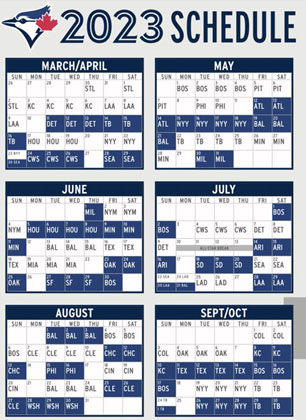
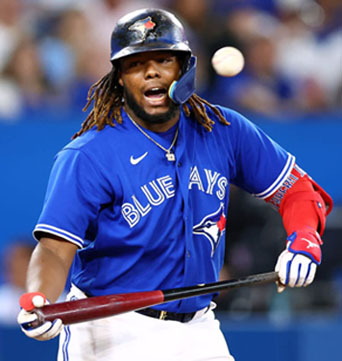
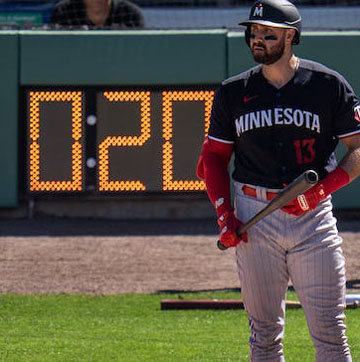
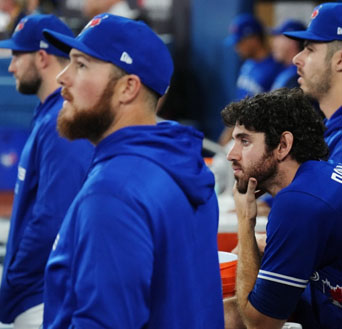
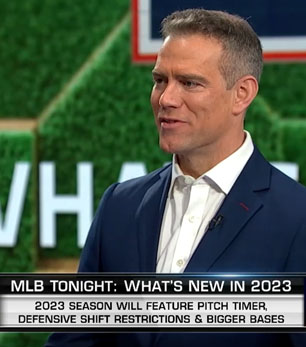
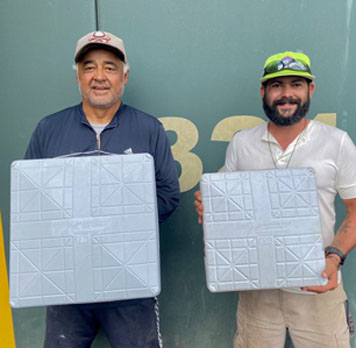
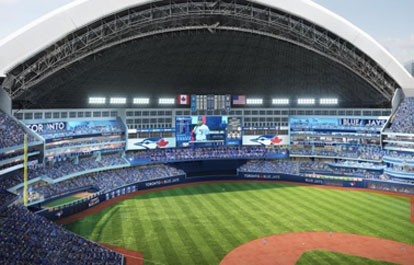
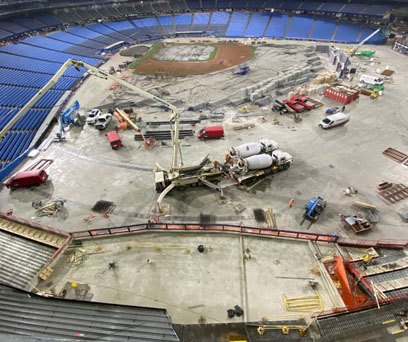
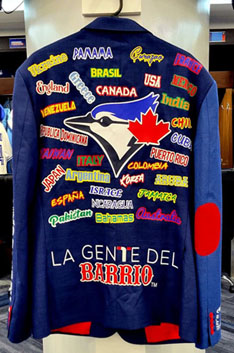
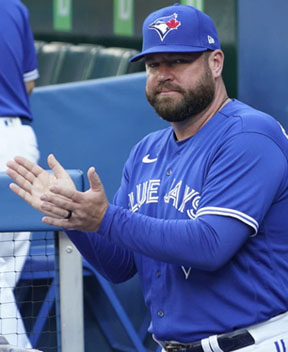
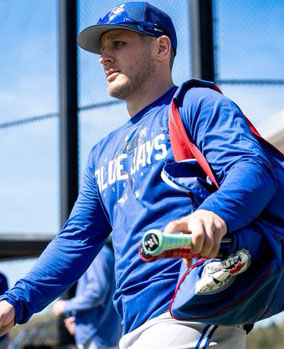
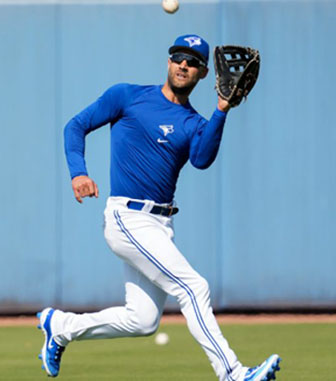
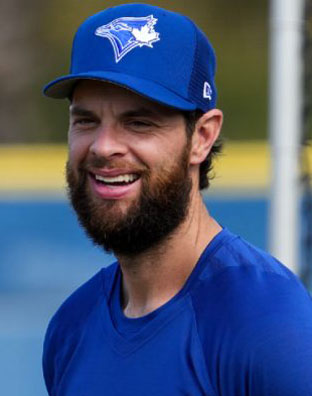
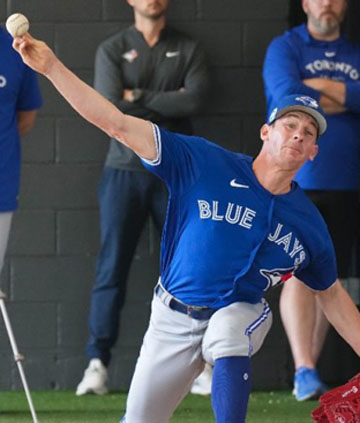
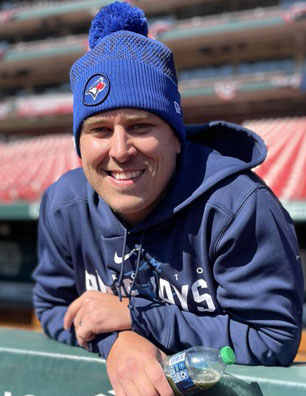
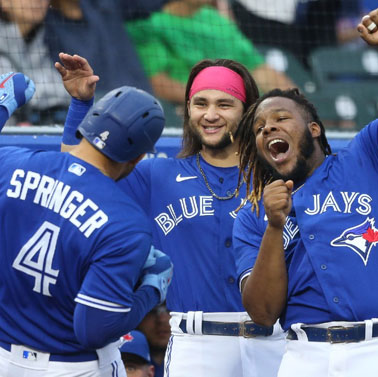
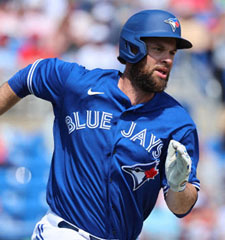


The Sparrow’s Blue Jay report is always a great overview of the players and the culture of the team. There are a lot of changes this year. I am hoping that the excitement in the city about the updated park and new players brings luck to the home opener on April 11!